Sharing is caring!

Kake Udon is my soul food. Something about its simplicity is perfect for those cold, rainy days. It’s also something I love to enjoy even in those hot summer days. It’s very simple to make and can be easily customised depending on any toppings you’d like to add.
WHAT IS KAKE UDON?
Kake udon is Japanese udon or thick wheat noodles in a simple dashi or broth. This is the most basic udon noodle soup that can be transformed into other variations with different toppings/add-ins. Since dashi usually contains bonito (derived from fish), this vegan version is made with kombu and shiitake dashi for that delicious umami.
You can make kitsune udon by adding some inari aage (seasoned fried tofu pouch), wakame or rehydrated seaweed for wakame udon, tempura for tempura udon, and more!
This recipe is also inspired by Marugame Udon’s Kake Udon and those I’ve tried in Japan. I recall having simple bowls of udon during lunch time in Osaka, Tokyo, and Kyoto in Japan, where you order from machines (kind of like vending machines!) and tap on which udon you’d like, what toppings, and how many pieces of inari sushi and tempura you’d like.
The concept is similar to fast food chains except these serve bowls of udon and soba and is very popular among people on their lunch breaks for a really quick yet hearty meal.

OTHER UDON VARIATIONS:
Just some of those I’ve tried before. Some were from my pre-vegan days of course!
- KITSUNE UDON – topped with inari age
- TEMPURA UDON – with fried tempura
- WAKAME UDON – with rehydrated wakame or seaweed
- NIKU UDON – topped with thin slices of stir-fried beef (usually in with a sweet sauce/seasoning)
KOMBU AND SHIITAKE DASHI
- 4 cups water
- 15 g dried kombu around 4×8”
- 2 shiitake mushrooms dried
FOR THE KOMBU, The white powdery layer on the kombu is naturally occurring and is what adds to the umami flavour when soaked. So do NOT wash your kombu!
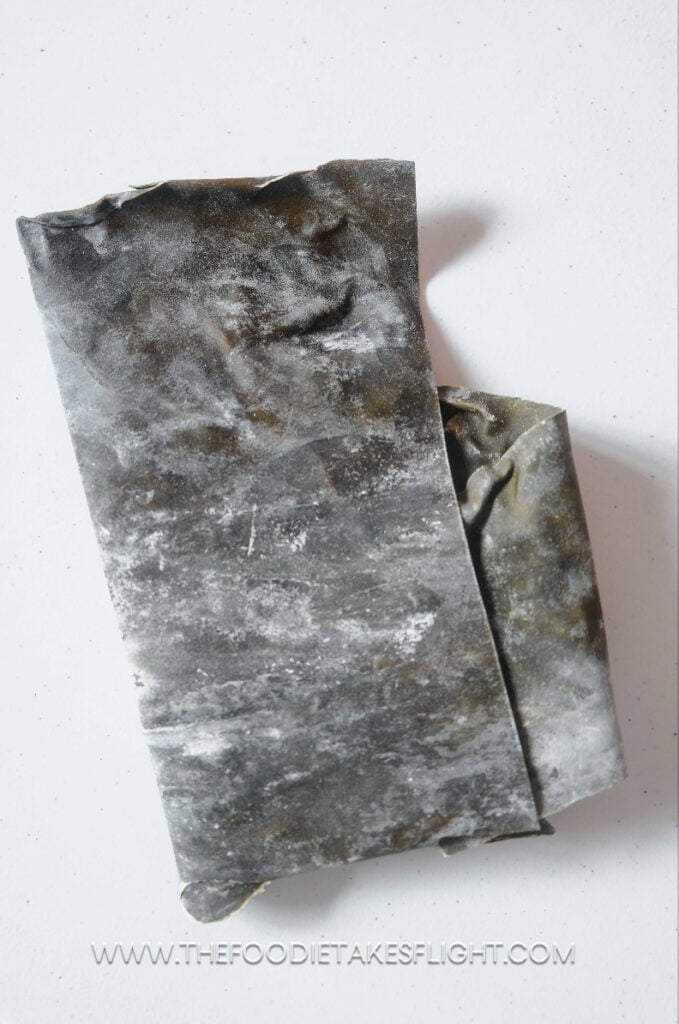
- Cut through your kombu using a pair of scissors. I like to fold mine in half and cut around five 1” (2.5 cm) cuts on each side. You can see the video below for a complete step-by-step.
- Place the kombu in a large container or jar. Add in the shiitake mushrooms. Pour in the water.
- Leave the kombu and mushrooms to soak in the water overnight. I keep mine refrigerated.


WHAT TO DO WITH REHYDRATED KOMBU
I love making simmered kombu or Kombu Tsukudani! It’s delicious over ricee with its saltiness and hint of sweetness.
You can find my Kombu Tsukudani recipe here.


NOODLES
- 2 servings frozen udon or dried udon (see recipe notes below)
Note: I recommend to use frozen Sanuki Udon if you can find it. These noodles are chewy and quite elastic. A lot better than dried udon in my opinion for their chewiness and delicious bite.


SEASONING
The full recipe is in the recipe card below ◡̈

PREPARE THE KAKE UDON
UDON
- Cook/prepare your udon noodles according to package instructions. For my frozen udon, I heated a medium sized pot with water and left it to boil over medium heat. Once boiling, I added the udon and allowed it to cook for a few minutes until chewy to my liking.
- Remove the noodles from the water. You can opt to run this through some water to wash off any excess starch.
- Divide between 2 bowls or 1 large bowl.
- I cooked the noodles before cooking the broth so I could use only 1 pot for this recipe.
- Remove the water from the pot.


PREPARE THE BROTH
- Add in the dashi into the pot. Add in the sugar, soy sauce, mirin, and salt. Taste the broth and allow the dashi to come to a boil.
SERVE AND ENJOY YOUR UDON
- Once it boils, turn off the heat. Pour in the soup into your bowl/s of noodles.
- Top with chopped onion leeks/scallions, Shichimi Togarashi, and any other toppings of choice. Enjoy your udon while it’s hot.

Enjoy your bowl of udon! You can find the full recipe below!

MORE NOODLE RECIPES YOU MIGHT LOVE:
- Ginger and Scallion Noodles
- Chili Garlic Oil Noodles
- Mie Goreng (Indonesian Fried Noodles)
- Stir-Fried Tofu and Basil Noodles
- Tantanmen (Vegan Ramen)
- Shoyu Ramen
- One-Pot Spicy Miso Ramen
Kake Udon (Japanese Udon Noodle Soup)
Ingredients
Dashi
- 4 cups water
- 15 g dried kombu around 4×8” (see notes)
- 2 pieces shiitake mushrooms dried
KAKE UDON
Broth
- 3 cups kombu & shiitake dashi (recipe above, see notes)
Noodles
- 2 servings frozen udon or dry udon (see notes)
To Serve
- Chopped onion leeks or scallions chopped
- Shichimi Togarashi , Japanese 7-spice blend
- Inari sushi
Instructions
Kombu and Shiitake Dashi
- Cut through your kombu using a pair of scissors. I like to fold mine in half and cut around five 1” (2.5 cm) cuts on each side. You can see the video below for a complete step-by-step.
- Also, do NOT wash your kombu. The white powdery layer on the kombu is naturally occurring and is what adds to the umami flavour when soaked.
- Place the kombu in a large container or jar. Add in the shiitake mushrooms. Pour in the water.
- Leave the kombu and mushrooms to soak in the water overnight. I keep mine refrigerated.
Broth
- The next day, remove the kombu and the mushrooms form the container. This will be your dashi. This will be around 3 cups since the mushrooms and kombu will have absorbed some of the water.
- Do not discard the kombu and mushrooms. You can also cut the rehyrdrrated mushrooms and enjoy it with your udon or other recipes.
- For the leftover rehydrated kombu, you can make this into Kombu Tsukudani or simmered kombu for a delicious dish with rice. You can see the recipe here.
Udon
- Cook/prepare your udon noodles according to package instructions. For my frozen udon, I heated a medium sized pot with water and left it to boil over medium heat. Once boiling, I added the udon and allowed it to cook for a few minutes until chewy to my liking.
- Remove the noodles from the water. You can opt to run this through some hot water to wash off any excess starch.
- Divide between 2 bowls or 1 large bowl.
- I cooked the noodles before cooking the broth so I could use only 1 pot for this recipe.
- Remove the water from the pot.
Prepare the Udon and Broth
- Add in the dashi into the pot. Add in the sugar, soy sauce, mirin, and salt. Taste the broth and allow the dashi to come to a boil.
- Once it boils, turn off the heat. Pour in the soup into your bowl/s of noodles.
- Top with chopped onion leeks/scallions, Shichimi Togarashi, and any other toppings of choice. Enjoy your udon while it’s hot.
WATCH Video
Notes
NOODLES
- I recommend to use frozen Sanuki Udon if you can get some at your local Japanese or Asian store. These noodles are chewy and quite elastic. A lot better than dried udon in my opinion for their chewiness and delicious bite.
DASHI
- If you have dash granules or other dashi you’d like to use, feel free to use this instead of soaking the kombu and shiitake mushrooms.
KOMBU
- There are different types of kombu depending on what you have access to. My kombu was thin so I was able to cut these up into smaller pieces using some scissors. It’s best to cut these into smaller pieces or at least make some cuts into the large sheet/piece for the flavours to seep out during cooking.
- Also, do NOT wash your kombu. The white powdery layer on the kombu is naturally occurring and is what adds to the umami flavour when soaked.
OTHER TYPES OF UDON
These are just some of those I’ve tried in the past:- KITSUNE UDON – topped with inari age
- TEMPURA UDON – with fried tempura
- WAKAME UDON – with rehydrated wakame or seaweed
- NIKU UDON – topped with thin slices of stir-fried beef (usually in with a sweet sauce/seasoning)
NUTRITIONAL INFO
YOU CAN PIN THESE IMAGES:








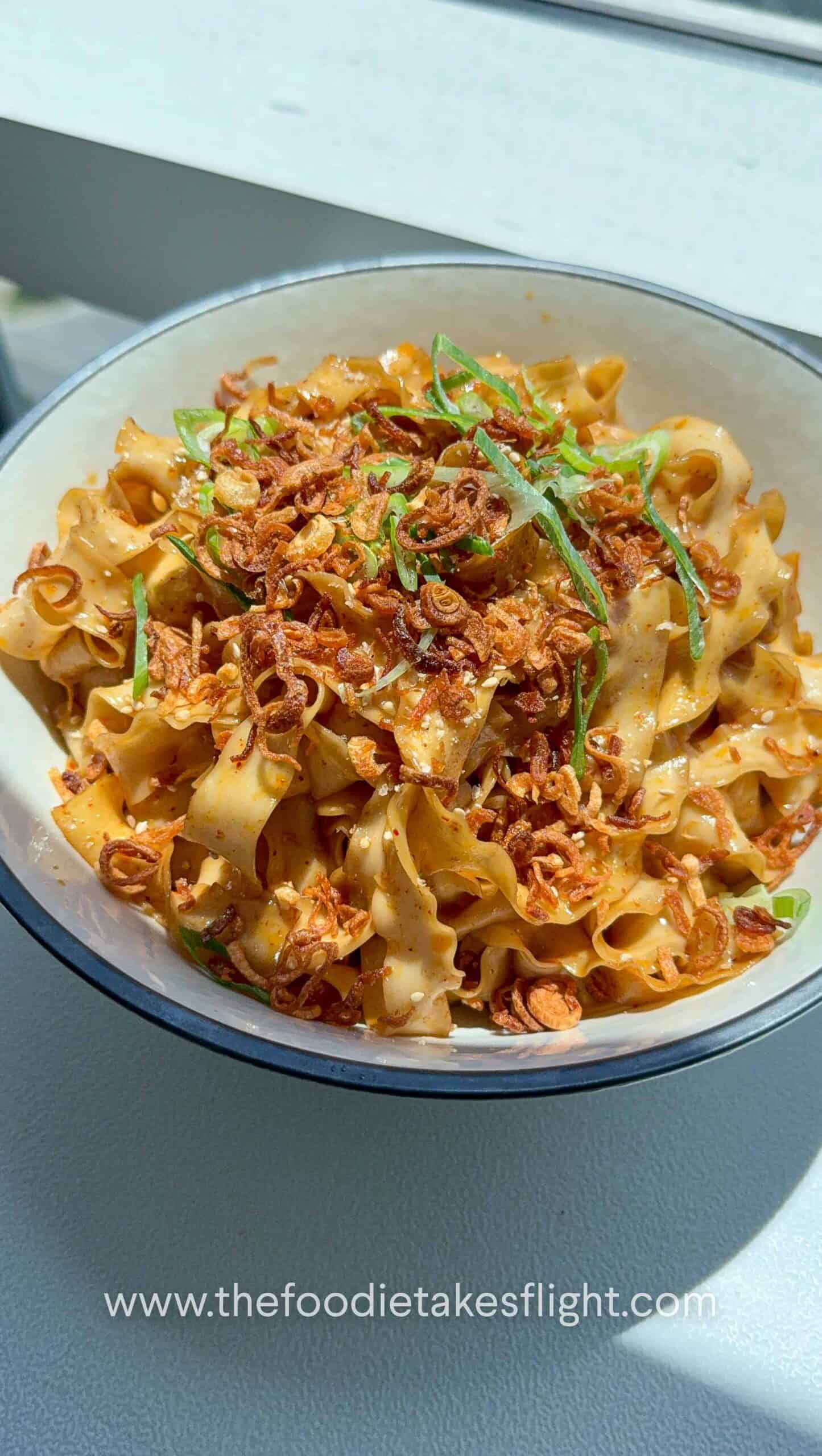
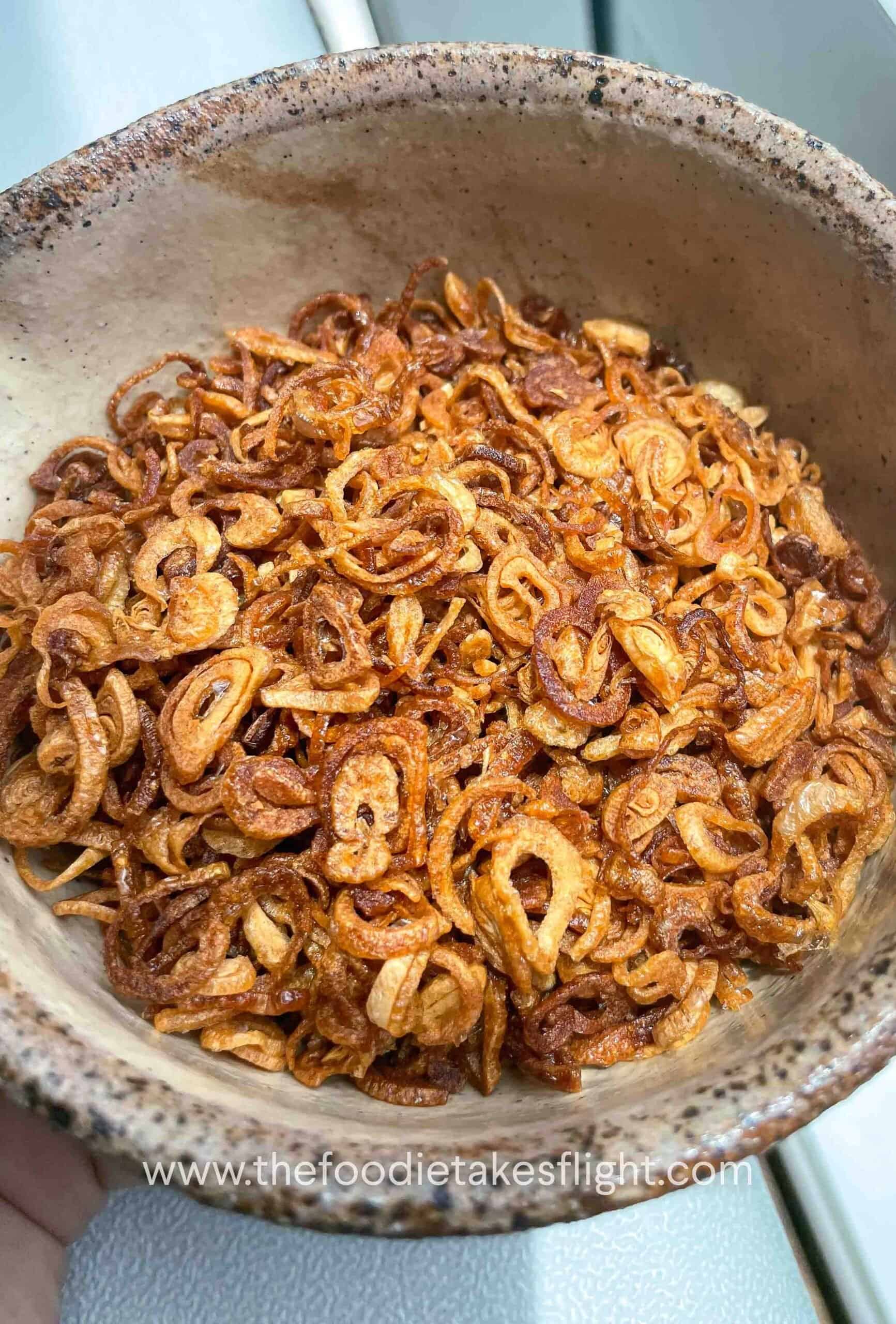
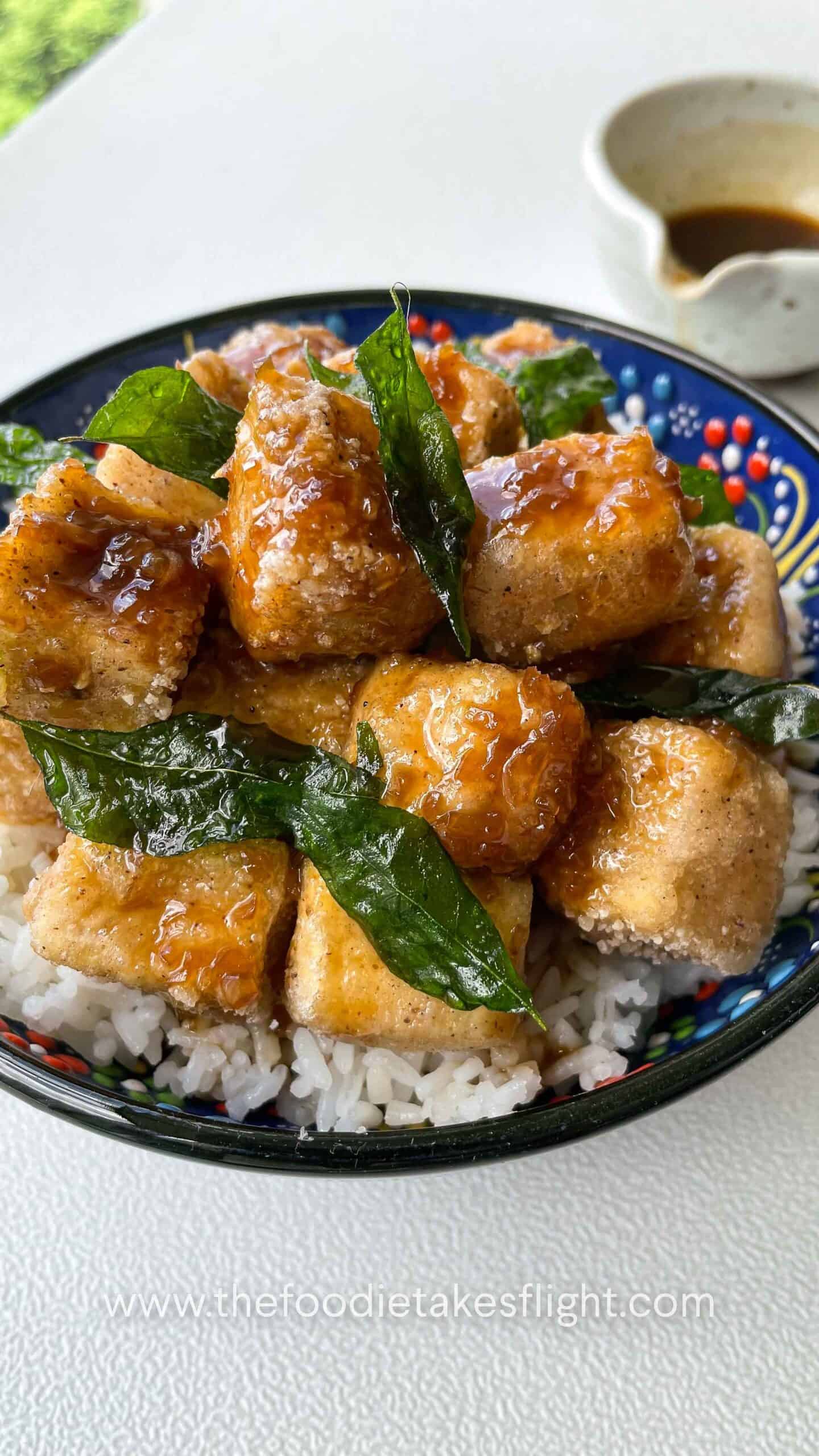
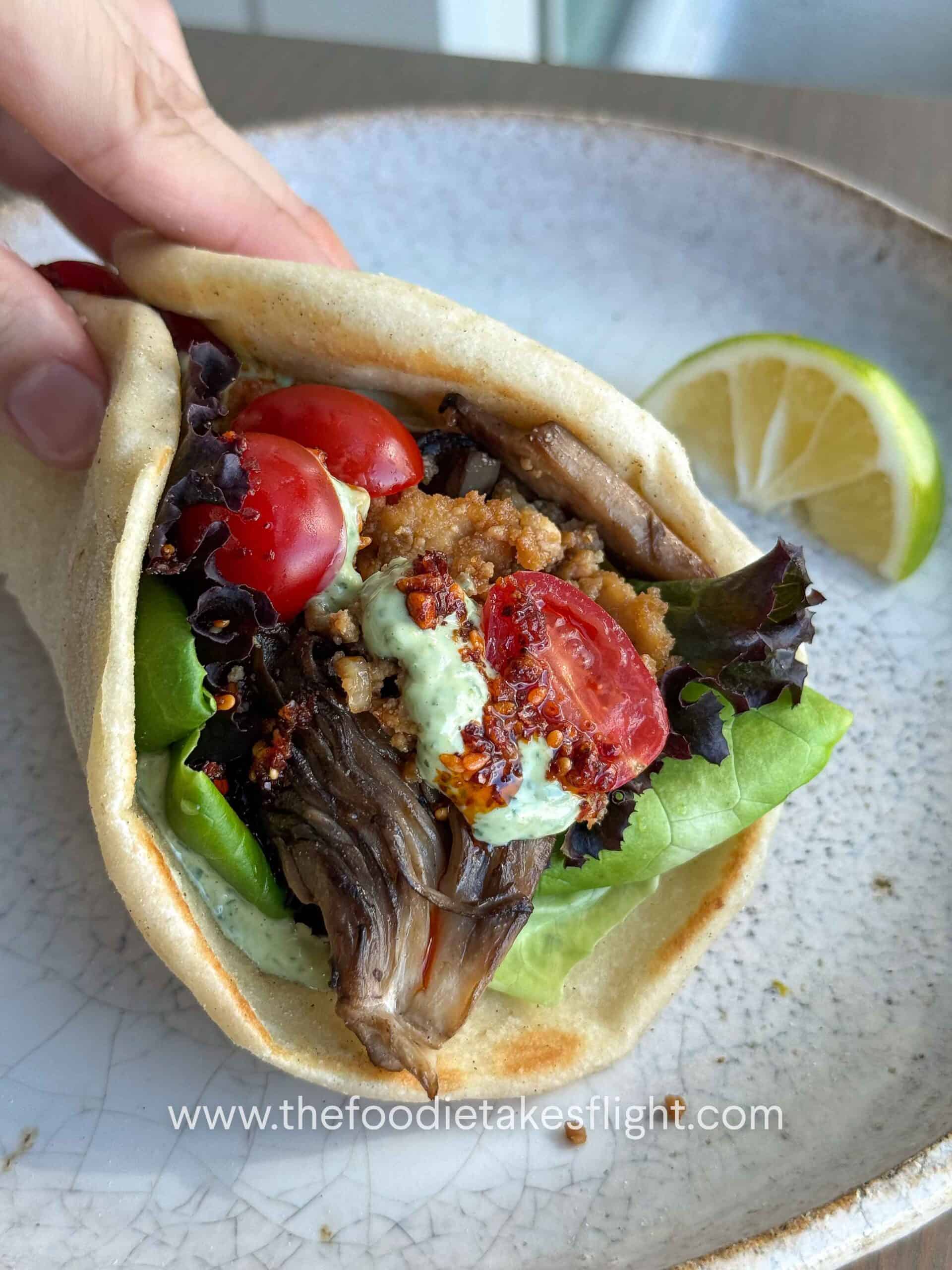
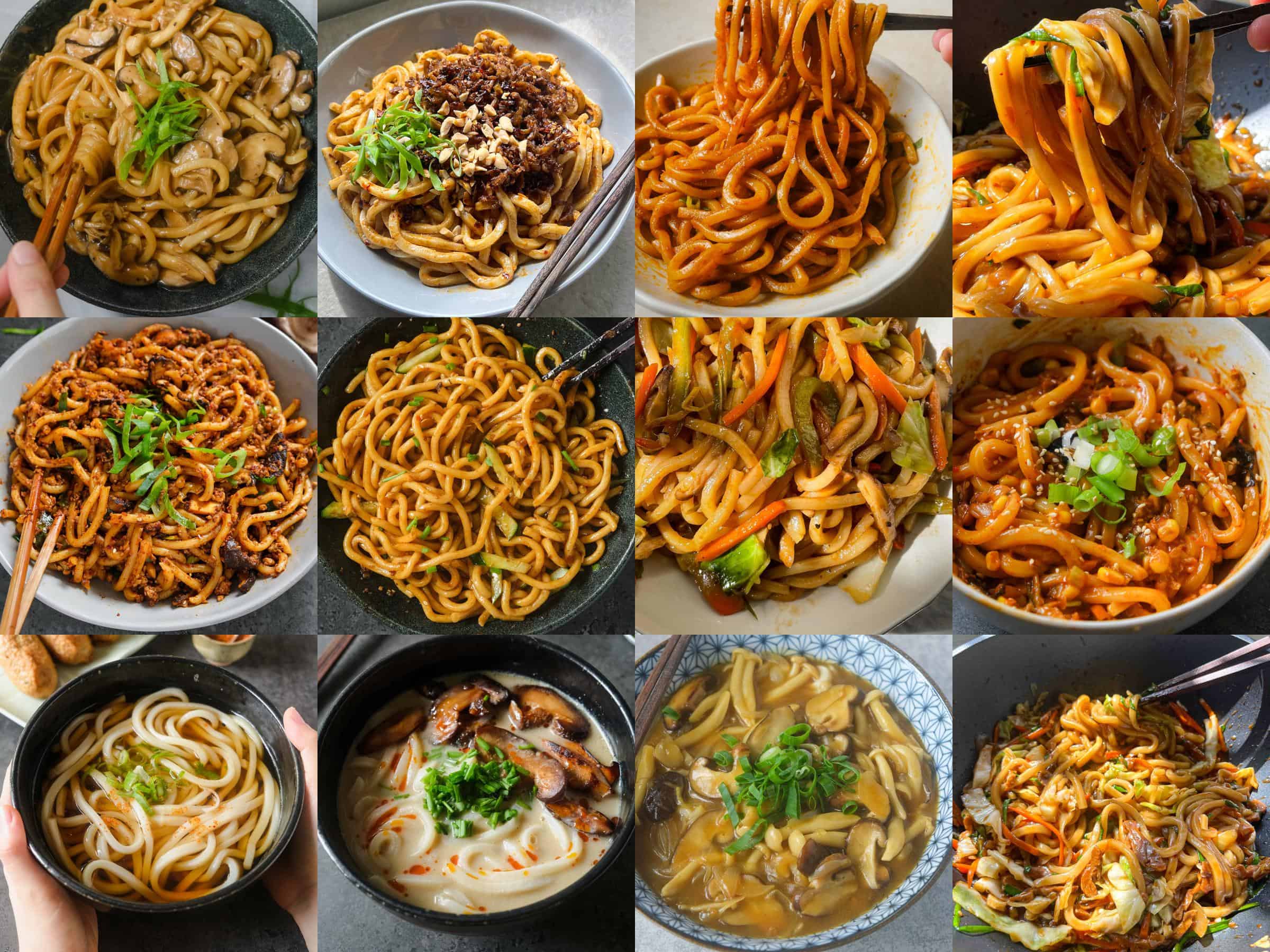
This Post Has 4 Comments
I was so afraid to use kombu before this recipe! I so appreciate the various suggestions, tips and tricks. Of course, the broth was delicious and perfect with tempura.
Happy to hear you gave kombu a shot 🙂 thanks Beverly!!
Perfect! I tried kitsune udon at a local place and searched for a recipe to recreate it.. this is even better, and much cheaper! I make it frequently.
Thanks Robin! Glad you stumbled upon this recipe 🙂